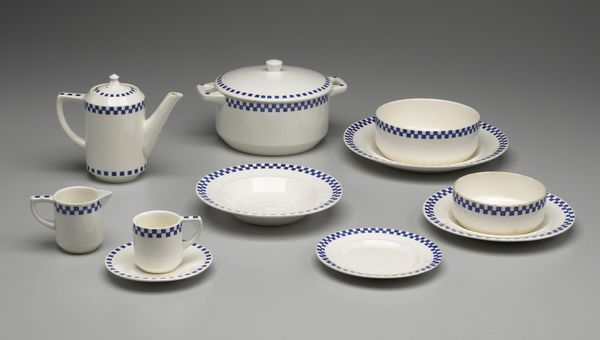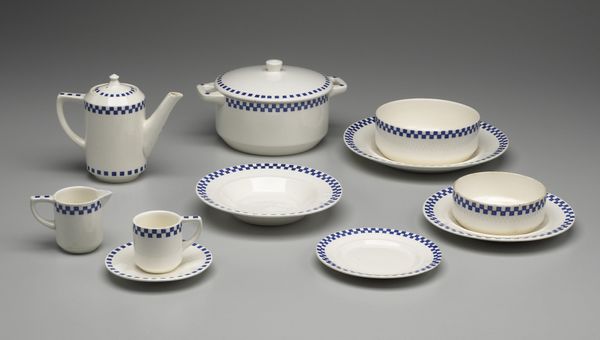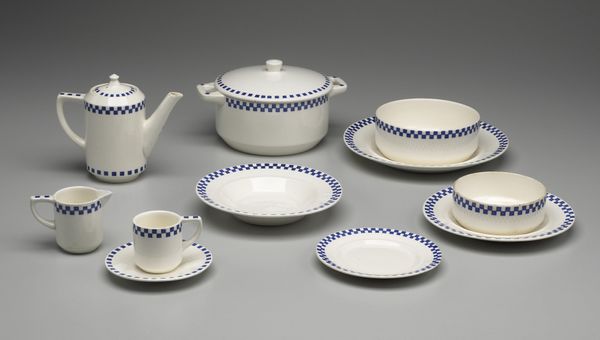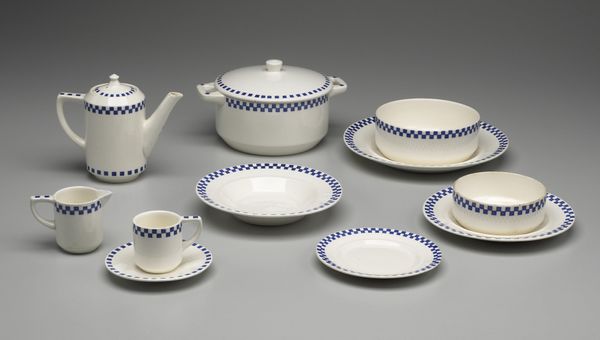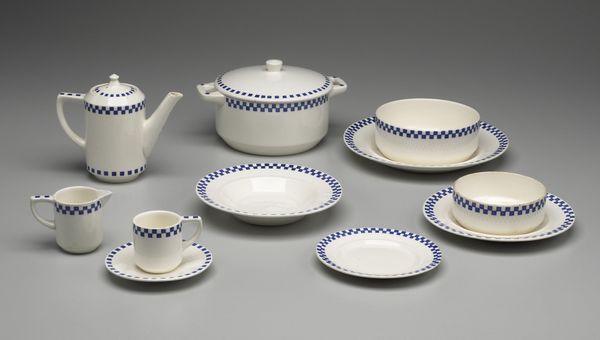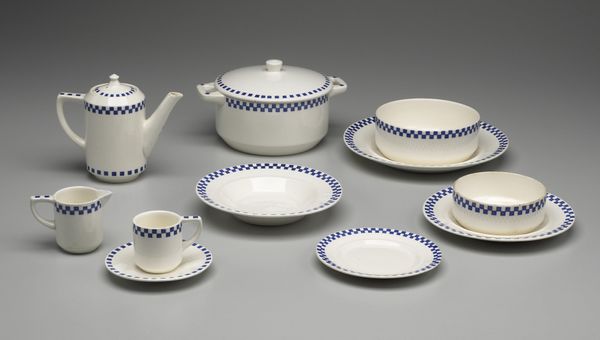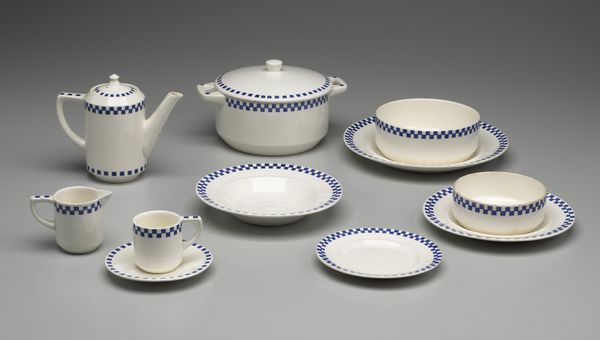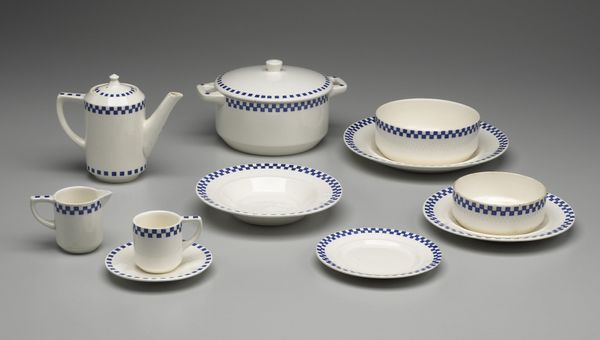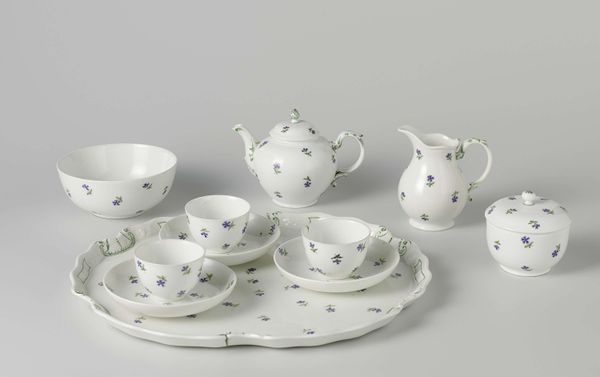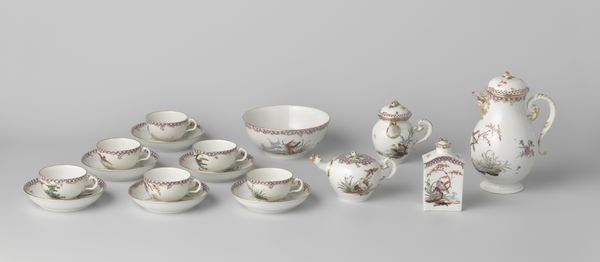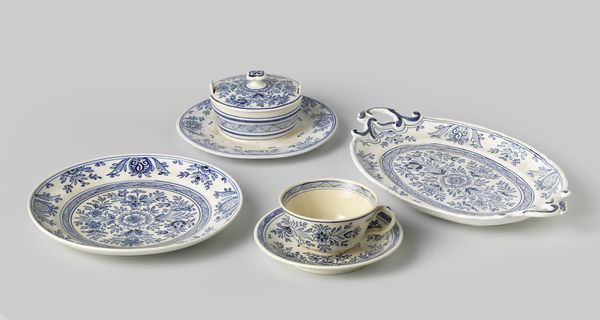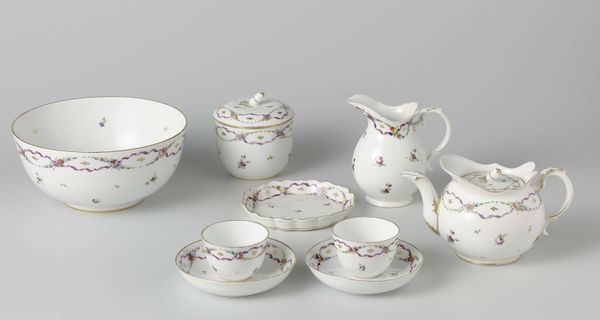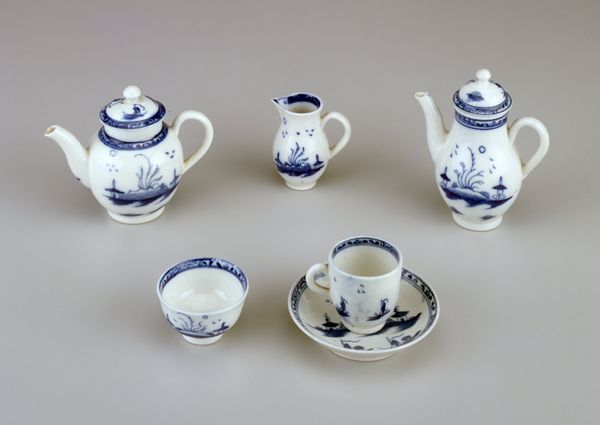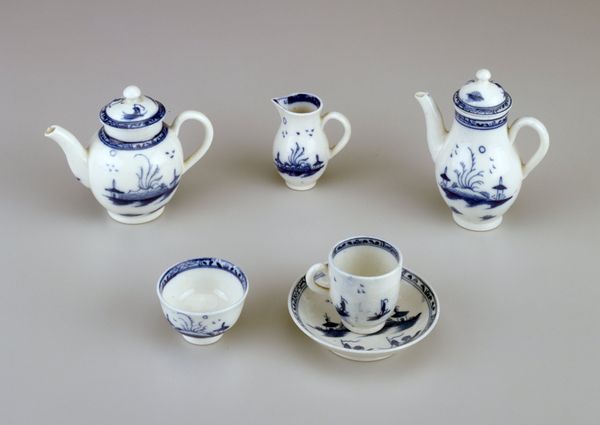
Cup and saucer c. 1924 - 1926
0:00
0:00
ceramic, earthenware
#
ceramic
#
earthenware
#
geometric
Dimensions: 2 x 3 7/8 in. (5.1 x 9.84 cm)
Copyright: Public Domain
This cup and saucer, crafted at the Waechtersbach Earthenware Factory in Germany, displays a checkered motif, a pattern that carries more than mere decoration. The checkered pattern, or tessellation, is one of mankind’s earliest experiments with pattern formation, emerging in ancient Egypt and the Near East. Its basic structure can be seen as a metaphor for order and structure. Yet, its recurring presence also evokes a sense of playfulness and the subconscious mind. In various contexts, the checkerboard has symbolized duality: light and dark, good and evil, reflecting our innate need to categorize and understand the world through binary opposites. From ancient game boards to heraldic symbols, the checkered pattern resurfaces, a testament to its enduring appeal and adaptability. This simple motif evolves into more complex patterns, demonstrating how the human mind perpetually seeks order while simultaneously embracing the chaos of endless possibilities. The presence of this archetypal image connects us to both our rational and irrational sides, a dance between control and unpredictability.
Comments
No comments
Be the first to comment and join the conversation on the ultimate creative platform.
